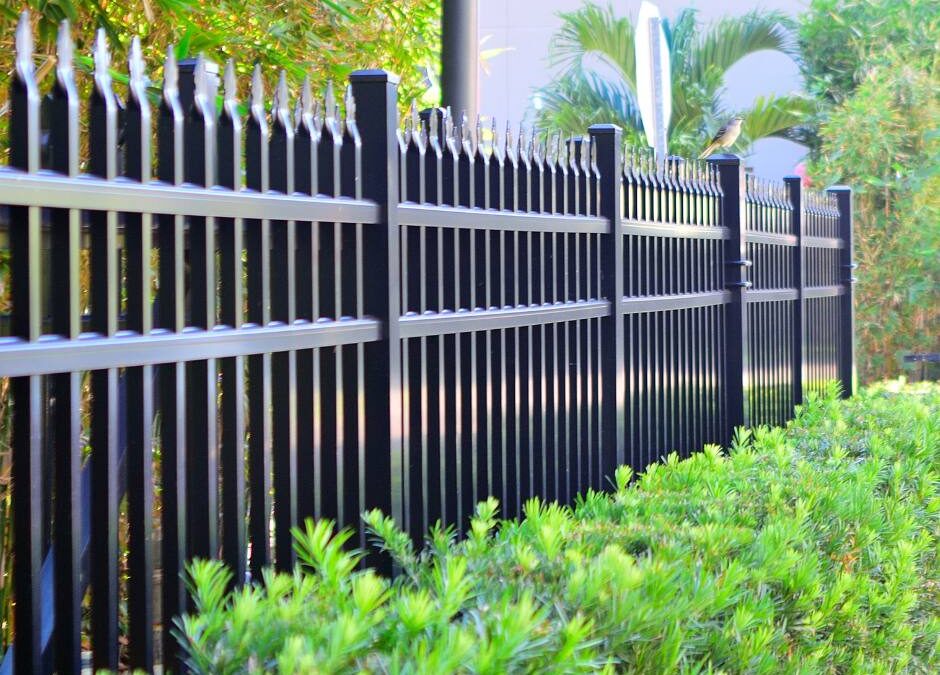Building the fence solves one problem (security, privacy, property boundaries), but it doesn’t need to create a new issue with how to maintain the base of the fence with mowing or weed eating which can damage fence posts and the fencing itself.
The best plan for the base of the fence is to create vegetation that will mostly maintain itself. Here are several ways to maintain vegetation around fences:
- Plant flowers, shrubs, or small trees around the base of the fence to add color and interest to the area. Make sure to choose plants that are suitable for the location and are not prone to growing too tall or wide, as they could damage the fence.
- Use ground cover plants, such as creeping juniper or English ivy, to help prevent erosion and reduce the growth of weeds.
- Prune or trim any plants or shrubs that become overgrown or are blocking the view through the fence.
- Use mulch around the base of the plants to help retain moisture and suppress weeds.
- Water the plants regularly, especially during dry periods.
- Apply a balanced fertilizer according to the needs of the specific plants you have chosen.
- Monitor for pests or diseases and take appropriate action to prevent or control them.
Plant Suggestions:
There are many plants that would be suitable for planting around a residential fence. Some options to consider include:
- Lavender: This fragrant herb is easy to grow and is well-suited to a variety of soil types. It blooms in the summer and is drought-tolerant, making it a low-maintenance choice.
- Rose bushes: These classic flowering plants come in a wide range of colors and sizes, making them suitable for almost any location. They require regular watering and pruning to keep them healthy.
- Boxwood: This evergreen shrub is a popular choice for hedges and borders. It is easy to maintain and can be trimmed to almost any shape or size.
- Hydrangeas: These flowering shrubs come in a range of colors and are known for their large, showy blooms. They prefer moist, well-draining soil and can tolerate partial shade.
- Japanese Maple: This small tree is prized for its colorful foliage and graceful form. It is well-suited to a variety of soil types and can tolerate partial shade.
- Hostas: These shade-loving plants are known for their large, lush leaves and are a popular choice for planting around fences. They are easy to care for and are resistant to pests and diseases.
- Daylilies: These hardy flowering plants come in a range of colors and are easy to grow. They tolerate a variety of soil types and are drought-tolerant.
Remember to choose plants that are suitable for the location, taking into account factors such as sunlight, soil type, and watering needs.

